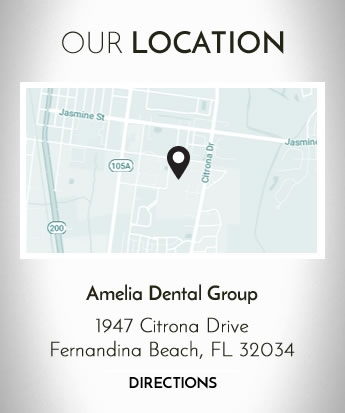
A brighter smile can make a big difference in your appearance. There are lots of choices today for improving your tooth color. Here are details about some of the options so you can decide which way you may want to whiten your smile.
Eliminating the need:
One way to eliminate the need for teeth whitening is to avoid foods and drinks that are known to cause stains. These include items like coffee, tea, red wine, berries, soy sauce, balsamic vinegar, and curry. If you do consume foods that stain, try to brush your teeth as soon as possible before stains can attach to your teeth.
Whitening at home:
There are many products available at your drugstore to help you brighten your smile at home. Whitening toothpastes and mouthwashes are two types of options, although it can take a while to see results from these methods. Whitening strips are a popular choice, which are covered in a bleaching solution and attached to the fronts of your teeth. Depending on the brand and strength, they might be in place from 5 to 30 minutes daily for a week or two in order to achieve the desired results. Overuse of these strips can increase teeth sensitivity, so be careful not to use them too often.
Professional whitening:
Whitening procedures performed at your dentist’s office are usually the fastest and most effective way to spruce up your smile. Custom trays filled with a higher strength bleaching gel may be made to be worn either in the office or at home later. Another method that must be administered in the office involves a bleaching agent applied to your teeth’s surface and then a bright light to speed up the process. You can typically expect dramatic results from this type of professional whitening.
Our dental office is located in Fernandina Beach

It’s part of life that your teeth will likely become dull and yellowed as you age and consume foods that contribute to teeth staining. However, you don’t have to go through life with a tainted smile. There are many options available these days for either at-home or professional teeth whitening. If you choose to brighten your smile, you’ll want to make sure you maintain the look as long as possible. Eating certain foods can help you naturally achieve the goal of a dazzling smile.
Citrus fruits:
Lemons, oranges, pineapples and other citrus fruits contain natural acids that help whiten teeth. Their tart flavor also promotes saliva in your mouth, which creates a natural rinse and polish over your teeth.
Strawberries:
Rich in vitamin C, strawberries can help prevent gum inflammation and other periodontal issues. They also contain malic acid as well as ellagitannins, which are antioxidants that help banish bacteria in your mouth.
Apples:
Chewing crunchy fruit like apples helps scrub your teeth to get rid of plaque and germs. Apples also have lots of malic acid, an ingredient in some toothpastes, which increases saliva to clean teeth and remove stains.
Pineapples:
An extra benefit of pineapples is bromelain, a compound that has cleansing and anti-inflammatory properties. It helps eliminate unsightly stains naturally.
Cheese:
Mineral ingredients like calcium and phosphorus give cheese an edge in strengthening your teeth. Cheese also contains protein that protects tooth enamel, and lactic acid that protects against tooth decay. Hard cheeses promote saliva production to clean your teeth.
Broccoli:
High in fiber, broccoli can help lower inflammation in your mouth and body. Crunching on raw broccoli cleans and polishes your teeth, and the iron content helps protect your teeth from damaging bacteria and acid.
Schedule your appointment at our Fernandina Beach dental office
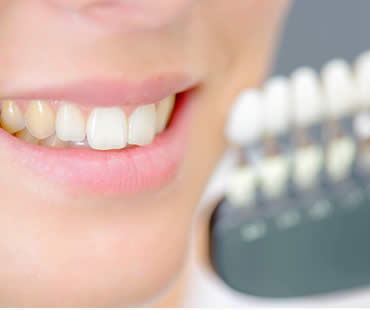
It’s hard to miss with advertisements and visits to the dentist that tartar is something you want to avoid for good oral health. But do you know what this substance is, how to keep from getting it, and what to do if tartar does develop?
What’s so bad about tartar?
Even if you brush and floss regularly, it’s impossible to get rid of all of the bacteria in your mouth. Bacteria and food residue combine to form plaque on your teeth. If left to thrive, plaque attacks your teeth and gums. It causes decay, gum inflammation, and will harden into tartar if not removed before it has the chance.
What does it do to my teeth and gums?
Tartar buildup makes it more difficult to brush and floss well, and tartar along your gums may lead to gum disease. Mild gum disease, or gingivitis, is often caused by plaque and tartar on your teeth. It can usually be reversed with careful dental hygiene. If left untreated, it will progress into periodontitis. This more serious gum disease can damage the bones and tissue that support your teeth, increasing your risk of tooth loss. It may also cause infections that contribute to heart disease and other health problems.
How can I control tartar?
Here are some ways to prevent tartar formation:
- Brush at least twice daily long enough to thoroughly clean every tooth and all of your gums. Consider using an electric toothbrush, which may be more effective for plaque removal.
- Use tartar-control fluoride toothpaste. It is formulated to help prevent tartar formation, and the fluoride can repair damage to your teeth that may have already begun.
- Floss every day to reach the areas that brushing cannot.
- Eat a healthy diet low in sugars and starches, and limit snacks between meals. Drink plenty of water to help rinse away plaque and bacteria.
- Don’t smoke because tobacco use has been shown to increase tartar buildup.
How do I get rid of it?
A professional cleaning is the only way to successfully remove tartar. See your dentist every six months for checkups and cleanings.
Schedule your appointment at our Fernandina Beach dental office
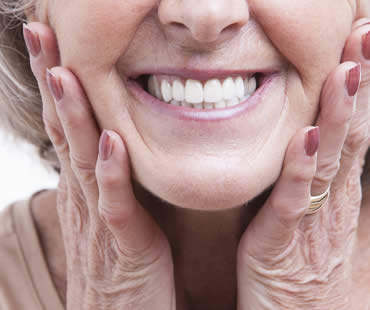
No matter how much you want to preserve your real teeth, it’s not uncommon for people to lose teeth. It may occur with age, decay, gum disease, or injury. If this happens to you, there’s no reason to go through life missing teeth in your smile. It’s better to quickly see your dentist for replacement teeth, so that you avoid shifting of your remaining teeth, speech problems, or saggy facial muscles. One solution that your dentist will likely offer to restore your smile is dentures. Here are some tips to help you select the right dentures for you.
Dentist
An important step in the process of getting dentures is making sure you have a qualified and experienced dentist treating you. Most dentists provide dentures as part of their services, or you may choose to go to a prosthodontist. This type of specialist focuses on restorative dentistry. No matter who you choose, make sure that you are confident you will get dentures that meet your specific goals and needs.
Type of dentures
There are several types of dentures available, each with their own attributes. These are the main kinds:
- Full dentures – an acrylic appliance that replaces all of the teeth in your upper jaw. These are functional and replicate your real teeth, and are usually comfortable when fitted correctly.
- Partial dentures – these replace one or two missing teeth using a dental arch. Partial dentures are made of acrylic, metal, plastic, or a combination of these materials. These are attached with a clip that holds them in place in your mouth.
- Permanent dentures – these dentures are permanently attached and require almost no maintenance. They are the costliest of the types of dentures.
Color
Dentures are available in various shades of white so that you can select the color that is most natural for you. Be careful about choosing the brightest white color, which may look unnatural compared to the color of your real teeth. Your dentist will help you find a neutral color that looks best with your smile and complexion.
Our dental office is located in Fernandina Beach
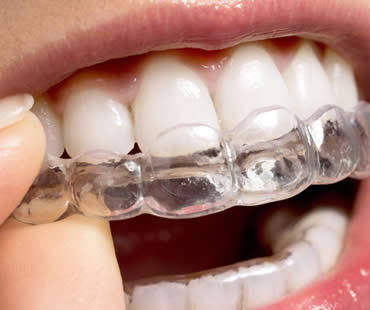
Feeling unhappy with your smile can leave you wondering how you can obtain a stylish new look. Instead of being turned off by traditional treatments like metal braces, consider the modern approach of Invisalign clear aligners.
This revolutionary treatment involves wearing clear plastic aligners made just for you to gently move your teeth into better positions. They are practically invisible and are removable for eating and cleaning. The smooth material makes them comfortable, and they do not have any bothersome metal brackets or wires.
If you are interested in Invisalign treatment, the first step is finding an orthodontist or dentist who provides this service. Not every professional is trained in this method, so look for a certified provider of Invisalign. Once you identify your choices, select the provider who is convenient, experienced and gives you confidence in your treatment.
Your initial appointment will allow the professional to examine your mouth to make sure you are a good candidate for Invisalign. Unless you have poor oral health or severe teeth problems, most people qualify for Invisalign. The doctor will then prepare a treatment plan to guide your case and create your aligners. An impression of your teeth, X-rays, and photos will be taken to help with the process. A 3-dimensional image will be developed to help with your treatment plan, and also to allow you to see how your teeth will improve at each stage of the process and provide a timeline.
Once your aligners are ready, you’ll begin wearing them for about two weeks at a time and then switch to a different set of aligners in the series your doctor gives you. A checkup at the office is required about every six weeks to monitor your progress and get more aligners in the series as needed. The process will continue until treatment is complete, often in about one year. Then you’ll be ready to show off your brand new smile thanks to Invisalign.
If you need a dentist in Fernandina Beach contact us today
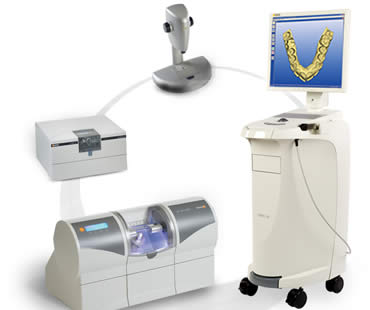
CEREC digital technology is a revolutionary method of restoring damaged teeth in one dental visit. It delivers fillings, crowns, or veneers to make your smile beautiful and stronger. In just a single appointment, the dentist can diagnose and prepare your bad tooth, create an impression of it, and use CEREC to create a restoration that will be bonded right away to your existing tooth.
The state-of-the-art technology involved with CEREC employs digital equipment to create a 3D impression of your tooth. Instead of the physical impressions that dentists used in the past, the digital imaging replaces it with a modern replica. CAD software is used to design the details of your restoration with a high level of accuracy. It allows customization of the restoration for your exact needs.
One of the greatest benefits of CEREC is that the restoration is milled right there in the office using the precise design specifications. In only about 15 minutes, your ceramic restoration is ready to be placed in your mouth. It is fitted, bonded, and polished so your tooth is restored and you can be on your way.
CEREC is used for several types of dental restorations. Popular choices include:
Crowns – a cap may be placed over a tooth to improve its strength, shape, size, or appearance. CEREC develops an attractive crown using material similar to enamel so that it looks and feels like your real tooth. It is accomplished in one visit, avoiding the messy impression, temporary crown, and subsequent dental appointment customary with traditional crowns.
Onlays – fillings can be achieved using a tooth-colored, smooth replacement of tooth material due to a cavity. Onlays cover a large area of chewing surface of your tooth, and may be similar to a crown except typically not covering the full tooth. CEREC onlays look and feel very natural and provide a durable restoration. This metal-free solution provides an attractive result for a filling in one visit.
Inlays – typically smaller than onlays, CEREC inlays are similar to their onlay counterparts. The inlay serves as an attractive and comfortable tooth filling in a smaller portion of your tooth, created with the CAD technology to ideally restore your tooth.
Our dental office is located in Fernandina Beach







